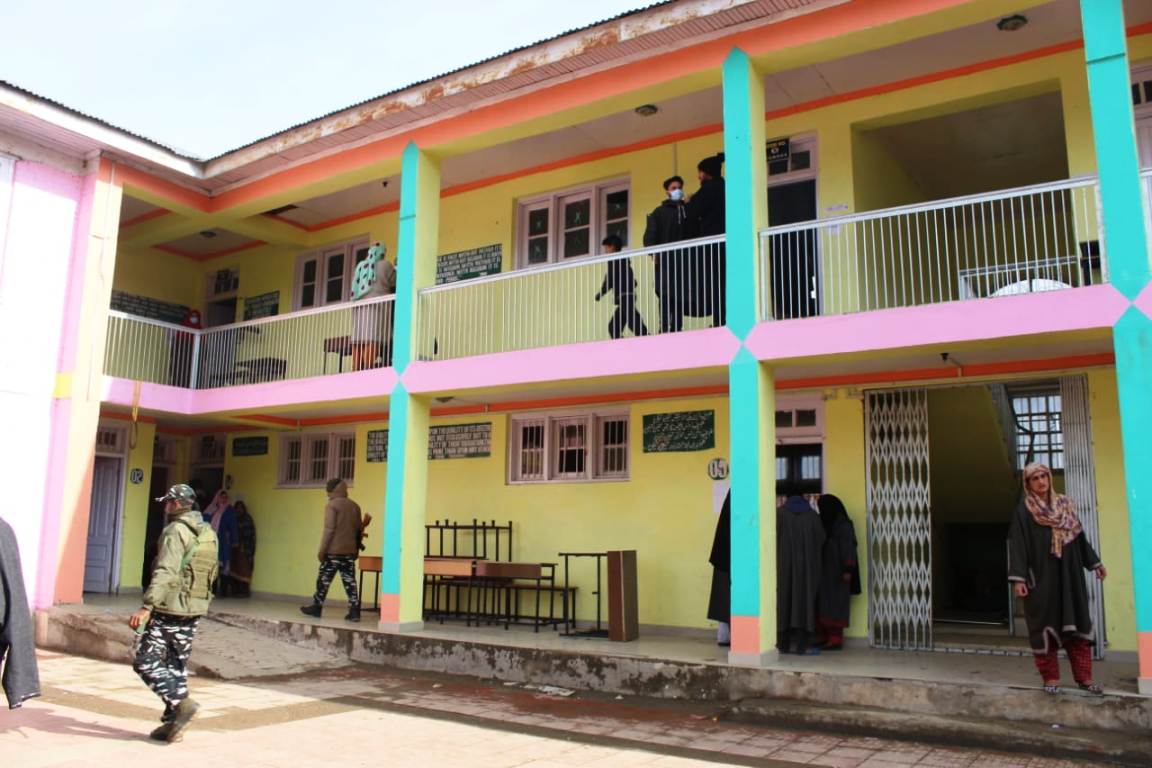KL NEWS NETWORK
SRINAGAR
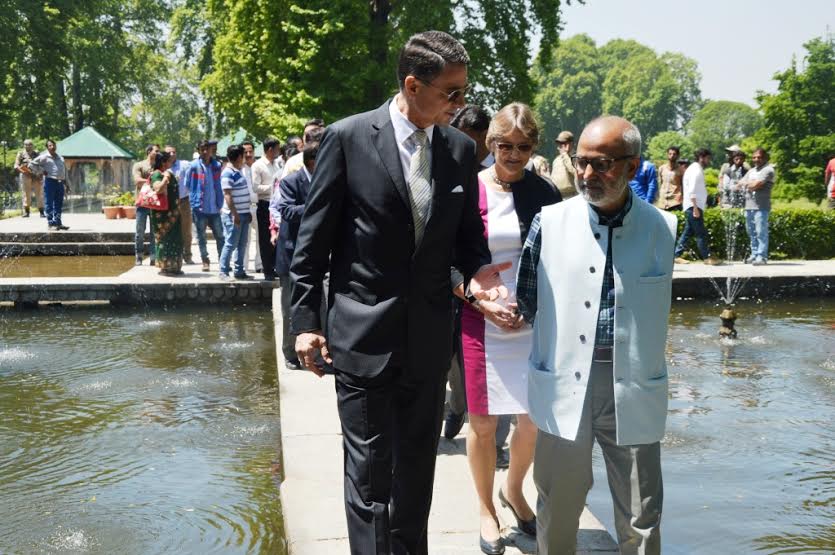
The Jammu and Kashmir INTACH Kashmir chapter issued a statement about the partial conservation of Dewaan-e-Khaas. The renovation of the Mughal ear heritage was funded German embassy based in New Delhi. After it was inaugurated by German Ambassador on May 02, 2016, the INTACH-K issued a statement which is being re-produced here
The Mughal gardens of Kashmir owe their origin to the concept of Islamic gardens spread over large parts of Muslim world. They are mostly based on Chahar Bagh (Quadripartite Garden) or fourfold layout.
One of the greatest extant examples of royal indulgence, the Shalimar Bagh was laid out by the Emperor Jahangir (r. 1605-27 AD) during one of his visits to Kashmir and completed around 1620. The garden is said to also have been greatly influenced by his beloved and gifted queen, Nur Jahan.
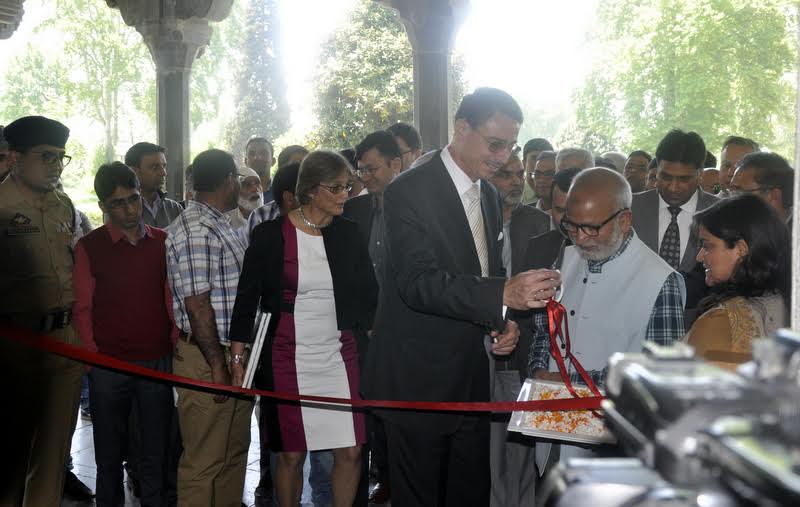
Unlike the monumental masterpieces of architecture of the Mughal dynasty spread throughout India, this garden seems to have been laid out on much simpler lines, probably with an intention of not competing with the beauty of surrounding nature.
Shalimar Bagh, as all other Mughal gardens of Kashmir was primarily a pleasure garden for the visiting Mughal emperor and his privileged entourage. The celebrated garden symbolizes the concept of “Paradise on earth”, physically manifested by the synthesis of built and landscape elements. Shalimar Bagh along with six other extant Kashmir Mughal gardens is on UNESCO’s Tentative List of World Heritage Sites since 2010.
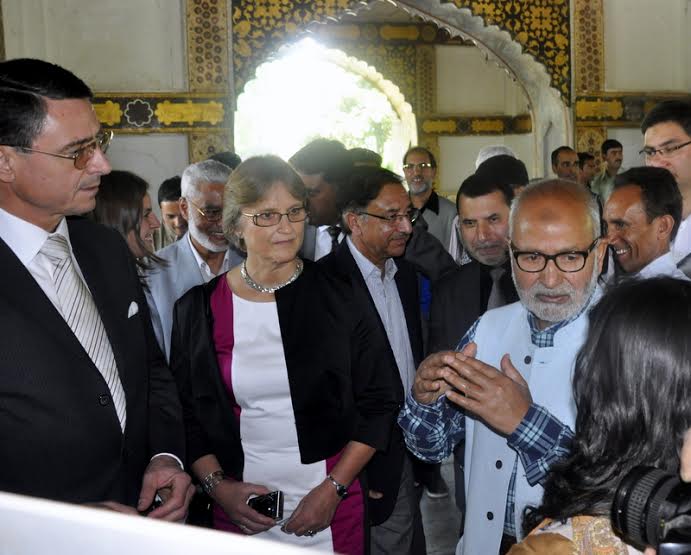
The Dewaan-i-Khaas is located on the fourth terrace in the erstwhile Zennana quarter of the garden and positioned in the middle of the terrace amidst a pool of water replete with an array of as many as 120 fountains. The pavilion is single storey, square in plan and has four large openings or vistas, one each on all sides. It is built on a high stone plinth and accessed by two bridges over the water pool.
There is an arcaded portico on the eastern and western side of the structure and a large central hall with a chamber each on either side. The pavilion also has decorative murals on the walls and papier-machie ceiling – which, at some point in time, have been the most significant decorative elements of the pavilion. The ceilings and Naqashi work in both Dewaan-i-Aam and Dewaan-i-Khaas had over a period of years deteriorated. The wall Naqashi has been periodically redone, most of the time inappropriately, resulting in interventions that have impacted the authenticity of the forms, materials and colors.
Further, significant damage has taken place due to seepage of rain water from the roof of Dewaan-i-Khaas due to damage to wooden roof. The garden is on the tentative list of UNESCO world heritage site since 2010 and therefore restoration of damages as above in a most appropriate and sympathetic manner has remained a key objective of the department of floriculture and INTACH.
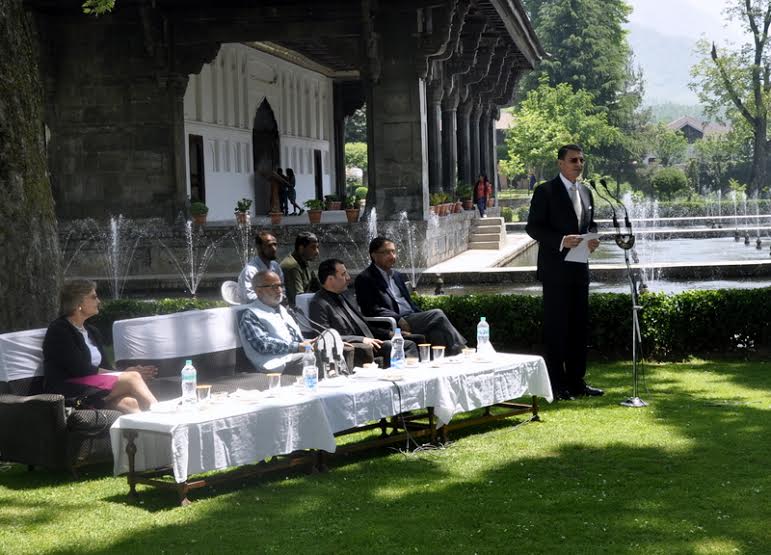
With a view to seek financial support and expert assistance for restoration at the Dewaan-i-Khaas, INTACH Kashmir Chapter made a proposal to the Embassy to help and support a restoration project for Dewaan-i-Khaas. The proposal comprised mainly of restoring the papier-machie ceiling and to the extent possible, the wall-moldings, which consequently led to the funding of the papier-machie ceiling work in the Dewaan-i-Khaas.
After receiving approval for the project from the German embassy at Delhi in 2014, prior to taking up onsite conservation of the panels, the conservators were trained in the Art Conservation Centre of INTACH Delhi initially and then at the Indira Gandhi National Centre for Arts,(IGNCA) Delhi.
INTACH, Kashmir Chapter undertook the conservation of the ceiling panels in March 2015. A specialised conservation lab was established onsite and a process of documentation undertaken. The panels were suffering from a host of conservation issues like material decay, wood rot, loosening up of supports, deterioration of fabric, insect and fungal damages and previous inappropriate repairs.

All the problems were scientifically analysed and a range of treatments tested to establish the best possible intervention. Initial cleaning was carried out after consolidating loose fine particles of paint and its base. Besides this, the paint layer also was very sensitive, requiring extreme care while removing the discoloured varnish layer. These challenges required a time consuming process of conservation.
The overall process, which was completed in December, 2015, involved the following treatments;
- Structural repairs of the support.
- Treatment of insect affected wood in the support.
- Filling of lost areas in the wooden support.
- Cleaning of discoloured surface coating and resinous exudations along with other non-original material.
- Consolidation of paint layer.
- Filling.
- Visual integration of lost areas.
Other works at the Shalimar Bagh:
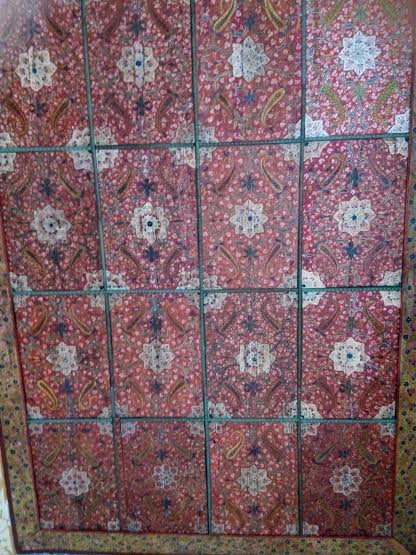
Conservation of Water Channels and Pools (April 2013 – on-going): The Naher or water channel is the defining element of the garden landscape theme.
In Shalimar Bagh, the average width of the channel is approximately 8 meters. The water is directed onto the topmost or fifth terrace through a natural stream and also fed by a Water Works pipeline as the former is not a sufficient source.
When the water enters the garden, it runs through a shallow (approximately 20 cm deep) stream and at the edge of every terrace, falls sharply in the form of a cascade. There are also two cross channels that intersect the main channel at the Dewaan-i-Khaas or Black Pavilion.
The process of restoration of the water channel, which in the past several years had undergone several inappropriate repairs, consisted of removal of about 700 tonnes of cement concrete from the channel bed. The process also consisted of removal of the defunct pipe network – both underground and over the channel bed that were inappropriately installed during various repair stages.
The restoration of the water channel and pools also included repairing of retaining walls that were bulging due to lateral thrust and tree roots. The stonework of the retaining wall was carefully numbered and removed before the toe walls were repaired, after which the stone blocks were installed in the same order.
Leakage in the water channel was also addressed and the water channel bed was restored to its original levels. The conservation process also involved the restoration of gravity based fountain network wherever possible.
Conservation of Hamam (2010-13):
The Shalimar Hamam is part of this architectural ensemble which also includes the Diwaan-i-Aam, Diwaan-i-Khaas, as also other significant buildings. The hamam is a U-shaped structure accessed from a large recessed opening which is preceded by a portico (dalan).
The entrance leads to a central chamber (hamam) and two side chambers (ante-rooms). The principal material used for construction is Badshahi bricks. Most of the chambers are lit by skylights.
The rooms have flat domed ceilings. The hamam consists of features like the bathing pool or hau, toilet and change room (Jamwar Khana).
Before conservation, archaeological explorations were carried out that revealed the heating system of this unique structure hidden under heaps of earth, garbage and waste deposited at the site over a period of many decades.
The preservation work also involved structural consolidation of the building with the least amount of intervention with the historic fabric of the building and removal of debris from the inner chambers, revealing original masonry piers that supported a floor system comprising 3 layers of Baramulla flagstone (Paetri), a small trace of which was excavated in one of the building chamber.
Various water storage tanks within the building were also revealed along with cleaning of the main bathing area (Hauz). Similarly, the original roof profile of the building was also revealed after clearing it of debris and vegetal growth which at certain sections had accumulated up to a height of 1800mm to 2000mm.
The conservation work involved repair to the roof, relaying of lime concrete roofing over damaged and disintegrated surfaces to prevent water percolation as well as recreating the brick masonry cornice traces of which could be seen in the building façade.
Similarly, damaged masonry piers and arches were also repaired on the basis of original designs wherever required. As the building had greatly suffered due to decay and erosion of masonry surfaces on the external facade, it was decided to undertake lime pointing of the exposed surfaces to prevent decay etc.
Traces of original lime plaster on the internal as well as external wall surfaces have been retained. Similarly various vents within the building used for the purpose of heating have been cleaned and repaired, thus serving as a valuable insight into the way these hamams functioned.
The process involved:
- Removing earth, garbage and waste material deposited at the site over a period of many decades along with vegetation growth
- Archaeological explorations that revealed the heating system of this unique structure along with traces of original Mughal era octagonal terracotta tiles in the pavement.
- Structural consolidation of the building with the least amount of intervention with the historic fibre of the building.
Significantly the conservation works on the hamam complements the work that INTACH had undertaken in conserving another similar Mughal period structure, the Dara Shikoh hamam located in the Akhund Mulla Shah Badakshi mosque precinct at Nagar Nagar.
The works being undertaken so far are a part of the initiative under taken by the department of Floriculture in collaboration with INTACH, J&K Chapter to conserve the Mughal Gardens as a part of the enduring legacy of Kashmir. It is hoped that the work on the Shalimar hamam will provide visitors with a unique and historical overview of the way Mughal hamams functioned.
The commemorative plaque was unveiled on Monday the 2nd of May 2016 by the Hon’ble Minister for Education, Jammu & Kashmir, Naeem Akhtar and the Ambassador, Federal Republic of Germany, New Delhi Dr Martin Ney, at a function in the gardens.
The function was attended by Lady Ambassador, Secretary to government Tourism and Floriculture Farooq Ahmad Shah, Director Floriculture, Director Tourism and other senior officers and representatives of civil society.
On this occasion, ambassador held an interactive session with super thirty group, the student representatives of various State Government Higher Secondary Schools. The children made queries about the image of Kashmir in Europe and the level of awareness about culture and heritage of Kashmir.






